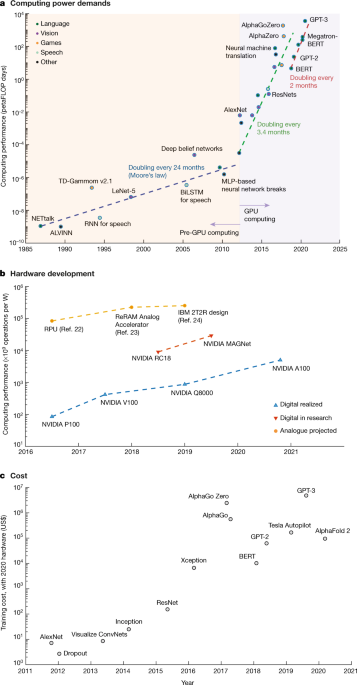Sheesh! I can't believe what I am reading! This article published 7 hours ago states "We should point out that, despite the potential outlined above, there is as yet no compelling demonstration of a commercial neuromorphic technology. Existing systems and platforms are primarily research tools."
I think I better email these guys ASAP to let them know about Akida and to re-assure them that BrainChip has already seized the opportunity!
Carpe diem! He-he-he!

Published 13 April 2022 (7 hours ago)
Brain-inspired computing needs a master plan
Extract 1
Although not all data-intensive computing requires AI or deep learning, deep learning is deployed so widely that we must worry about its environmental cost. We should also consider applications including the Internet of Things (IoT) and autonomous robotic agents that may not need always to be operated by computationally intense deep learning algorithms but must still reduce their energy consumption. The vision of the IoT cannot be achieved if the energy requirements of the myriad connected devices are too high. Recent analysis shows that increasing demand for computing power vastly outpaces improvements made through Moore’s law scaling
3. Computing power demands now double every two months (Fig.
1a). Remarkable improvements have been made through a combination of smart architecture and software–hardware co-design. For example, the performance of NVIDIA GPUs (graphics processing units) has improved by the factor of 317 since 2012: far beyond what would be expected from Moore’s law alone (Fig.
1b)—although the power consumption of units has increased from approximately 25 W to around 320 W in the same period. Further impressive performance improvements have been demonstrated at the research and development stage (Fig.
1b, red) and it is likely that we can achieve more
4,
5. Unfortunately, it is unlikely that conventional computing solutions alone will cope with demand over an extended period. This is especially apparent when we consider the shockingly high cost of training required for the most complex deep learning models (Fig.
1c). We need alternative approaches.
Extract 2
We should point out that, despite the potential outlined above, there is as yet no compelling demonstration of a commercial neuromorphic technology. Existing systems and platforms are primarily research tools. However, this is equally true of quantum computing, which remains a longer-term prospect. We should not let this delay the development of brain-inspired computing; the need for lower-power computing systems is pressing and we are tantalizingly close to achieving this with all the added functionality that comes from a radically different approach to computation. Commercial systems will surely emerge.
The benefits and future prospects of neuromorphic, or bio-inspired, computing technologies are discussed, as is the need for a global, coordinated approach to funding, research and collaboration.

www.nature.com

www.nature.com


